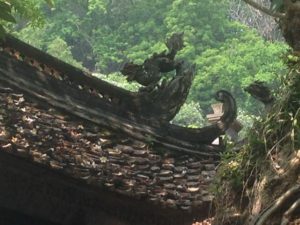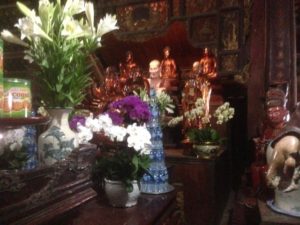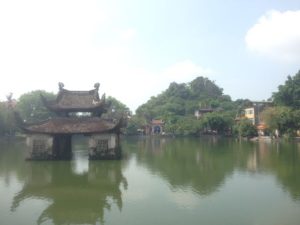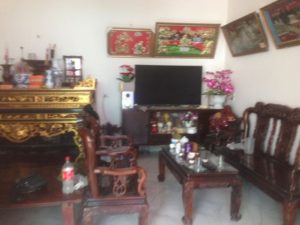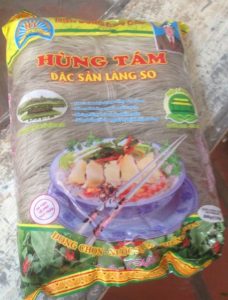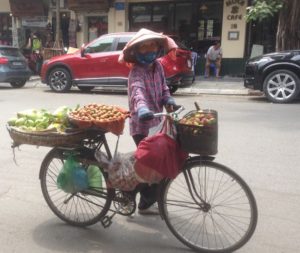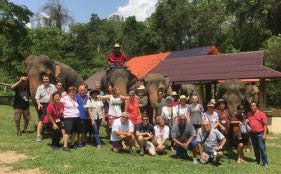Today we did a tour of Thay Pagoda, also known as the Pagoda of the Master. On the way, Tho regaled us with stories of Vietnam’s economy pre and post 1986 when the country opened to the west and allowed a free market system. Before 1986, individuals were not allowed to sell anything. There was not enough food, and people had to stand in long lines to redeem food coupons. Often rice portions were weighted down with rocks, vegetables were spoiled, and there was no meat. There was 500% inflation. Now, it is closer to 9% (still high, which accounts for their willingness to take US dollars). Everyone dressed the same because the government gave everyone two sets of clothes for the year. If individuals tried to raise their own chickens in secret, they might be reported and go to prison. A rich person might have a bicycle.
The contrast with today, when everyone has some form of business in the front room of their house, is dramatic. Today, as people make more money, they are starting to aspire to buy cars rather than scooters, but the 250% tax the government adds to a car makes them very expensive.
Tomorrow is the celebration of Buddha’s birthday, so many of the pagodas have been decorated with extra flags and extra offerings. This sign over the pagoda has the dates of Buddha’s birth 2562 B.C. and 2018 (birthday).Many Vietnamese were visiting the temple as well.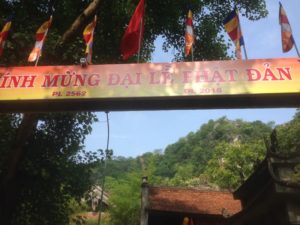
 Thay Pagoda was originally built on this site between the small mountain and the lake in the 11th century, but the current pagoda was rebuilt out of ironwood 400 years ago. It is really a compound of pagodas with a peaceful garden in the middle.
Thay Pagoda was originally built on this site between the small mountain and the lake in the 11th century, but the current pagoda was rebuilt out of ironwood 400 years ago. It is really a compound of pagodas with a peaceful garden in the middle.
Each building has many altars in a row, including ones with photographs of the recently dead (who are honored for 49 days until they reach nirvana).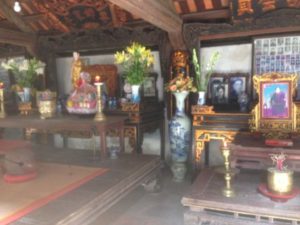

People also burn spirit money (copies of money) to send to their ancestors. Notice the bundles of bills waiting to be burned.
The central pagoda is protected by many fierce guardians.
Another room displays a large wooden carving illustrating the punishment awaiting bad people after death.
The monk who founded the pagoda also founded the water puppet show in 1072, the first in Vietnam.
Afterwards, we walked through the narrow alleys of So village, an ancient village of about 700 families. 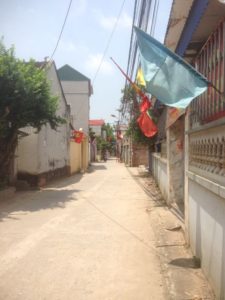 We visited with an 86 year-old woman who showed off the new house her kids had built for her
We visited with an 86 year-old woman who showed off the new house her kids had built for her
She demonstrated how to prepare beetle nut for chewing. Beetle nut produces bright red juice, which reddens the lips. It blackens the teeth, which is thought to be beautiful, and it supposedly protects the teeth from decay.
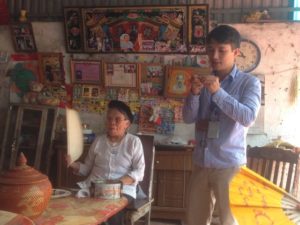 Tho demonstrated the use of the water pipe for smoking tobacco (practiced by the men).
Tho demonstrated the use of the water pipe for smoking tobacco (practiced by the men).
Most houses were modest, but we passed one new mansion.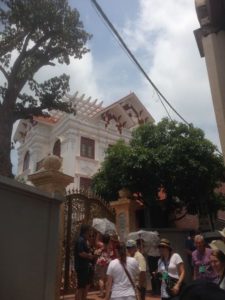
We stopped at one house/small factory where they making glass noodles from cassava. Tho showed us the entire process from making a slurry of paste, spreading it on a conveyor where it is steamed, then put on bamboo racks to dry in the sun, then cut into vermicelli-sized pieces, dried again and packaged for sale in the market.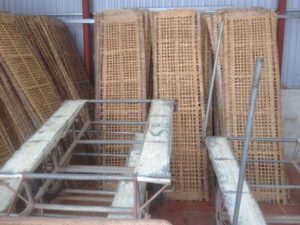
The drive back to Hanoi showed quite a contrast between the old and the new.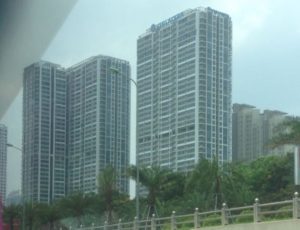
Tonight we have a farewell diner and we fly home tomorrow. It has been a fantastic trip.




